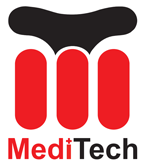Cleanrooms are essential in industries that require strict control over contaminants such as pharmaceuticals, biotechnology, and electronics manufacturing. Maintaining a cleanroom’s cleanliness is crucial to ensure the quality and safety of the products or processes taking place within it.
Understand Cleanroom Classifications
Cleanrooms are classified based on the number and size of particles allowed per cubic meter. Familiarize yourself with the specific classification of your cleanroom, as the cleaning procedures may vary based on the level of cleanliness required.
Assemble the Right Tools and Equipment
To clean a cleanroom effectively, gather the necessary cleaning supplies, including:
- Cleanroom-compatible mops and buckets
- Lint-free wipes
- Vacuum cleaners with HEPA filters
- Cleanroom-compatible cleaning agents and disinfectants
- Personal Protective Equipment (PPE) such as gloves, shoe covers, hairnets, and coveralls
Prepare a Cleaning Plan
Develop a detailed cleaning plan that outlines all the required cleaning activities, frequencies, and responsibilities. Include specific instructions on how to clean different areas, surfaces, and equipment within the cleanroom.
Prepare Yourself
Before entering the cleanroom, ensure you are properly attired in the appropriate PPE, including a cleanroom-compatible gown, gloves, shoe covers, and hairnets. Thoroughly wash and dry your hands to eliminate any contaminants.
Follow the Right Cleaning Procedures
1. Begin with a Dry Clean: Using a vacuum cleaner with a HEPA filter, start by removing loose particles, dust, and debris from the floor, walls, and surfaces. Pay special attention to corners and hard-to-reach areas.
2. Wet Cleaning: Dampen a lint-free wipe or mop with a cleanroom-compatible cleaning agent or disinfectant. Follow the specific instructions for dilution and application. Wipe down all surfaces, including walls, ceilings, and workstations. Ensure you clean from top to bottom, moving from the least critical to the most critical areas.
3. Focus on Critical Surfaces: Critical surfaces, such as laminar flow hoods, biological safety cabinets, and equipment, require extra attention. Clean these surfaces thoroughly, ensuring there are no residues or contaminants left behind.
4. Replace Cleaning Tools Regularly: As cleaning tools become dirty, replace them with clean ones to avoid redistributing contaminants. Dispose of used wipes and mop heads properly to prevent cross-contamination.
Train and Educate Staff
Regularly train cleanroom staff on proper cleaning techniques, the importance of cleanliness, and the potential risks associated with improper cleaning. Ensure they understand the cleaning plan, protocols, and the significance of maintaining a cleanroom environment.
 China Cleanroom Foam Swabs, Polyester Swabs, Printer Cleaning Kit Manufacturer, Supplier, Factory – MediTech
China Cleanroom Foam Swabs, Polyester Swabs, Printer Cleaning Kit Manufacturer, Supplier, Factory – MediTech